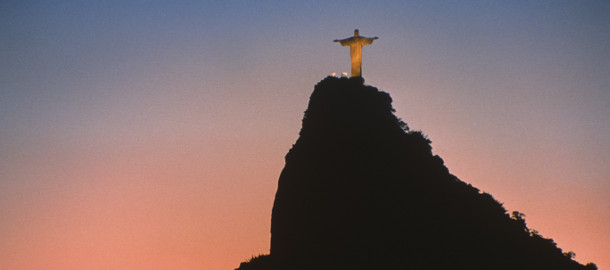
Rio de Janeiro: 450 Years of the Carnival City
Rio de Janeiro (January’s River), or more widely just Rio, celebrates its 450th birthday in March 2015.
Rio is renowned worldwide for being a city of vibrant culture. People from across the globe flocked to the Brazilian destination in their thousands for the FIFA World Cup in 2014, and the city is now preparing for the Summer Olympic Games in 2016.
There are many factors that contribute to Rio de Janeiro’s cultural diversity. We have picked out just a few below.
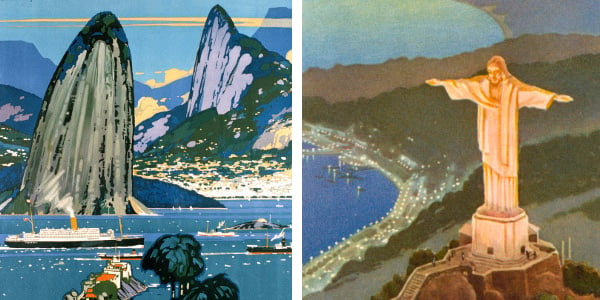
Left: Poster advertising Rio de Janeiro (colour litho), Shoesmith, Kenneth (1890-1939) / Private Collection
Right: Statue of Christ the Redeemer illuminated at night, Rio de Janeiro (chromolitho), European School, (20th century) / Private Collection / © Look and Learn
City of Culture
Founded in 1565 by the Portuguese, the city of Rio de Janeiro has a rich and colorful history. Established as the center of the Portuguese empire in the early 19th century, Rio has been a key player in the history of the nation of Brazil.
Now the second largest city in Brazil, and sixth largest in the Americas, Rio has over 12 million residents and is one of the most diverse areas of the world.
Futebol
Since time long past, the city of Rio has been a fertile ground for sport, none more so than soccer. Soccer, or Futebol in Portuguese, is Brazil’s national sport, and nowhere is the sport more worshiped then in Rio.
Maintaining seven of the city’s own professional teams, Rio was host to the 2014 FIFA World Cup, drawing over 3 million visitors to the city with billions more tuning into the action.
In Rio, soccer is not just a pastime, but a way of life, with many of the city’s youth seeing the sport as their passport out of the poverty of the Favelas.
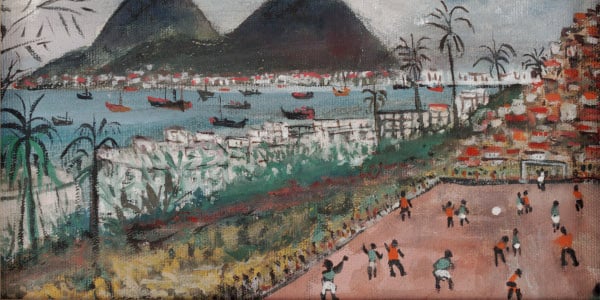
Football at Rio de Janeiro (oil on canvas), English School, (20th century) / National Football Museum, Manchester, UK
Favelas
Favela is the name given to the densely populated slums of Rio’s most urban areas. Housing a large percentage of the city’s population, the Favela’s have fast become some of the furthest reaching suburbs of Rio.
Towering high up onto the cities surrounding mountain sides, these areas are renowned not only for poverty and violence, but the rich culture and artistry that is bread within.
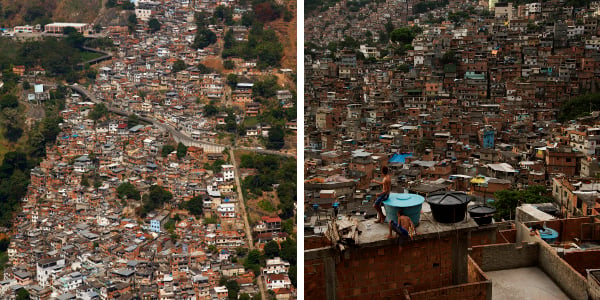
Left: Brazil, Rio de Janeiro, view of favela from hill / Dorling Kindersley/UIG
Right: The largest and most popular favela, or slum, in Latin America, Rocinha has over 300,000 residents. Rocinha, Brazil. 2005. (photo) / Majority World/UIG
Christ the Redeemer
The colossal statue, Christ the Redeemer (Cristo Redentor) is an art deco phenomenon created by french sculptor Paul Landowski. Standing 98 feet tall on the summit of the 2,300 feet Corcovado Mountain, it is a monumental symbol of Brazil’s Christian faith and has become the most recognizable point of Rio de Janeiro.
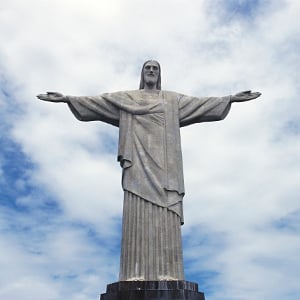
Christ the Redeemer (photo) / Corcovado Mountain, Rio de Janeiro, Brazil / De Agostini Picture Library / W. Buss
Carnival
The Carnival in Rio de Janeiro is the world’s most famous festival. Held just before the Christian holiday of Lent every year, Carnival is considered the largest festival in the world with over 2 million people descending upon the city streets for one giant party.
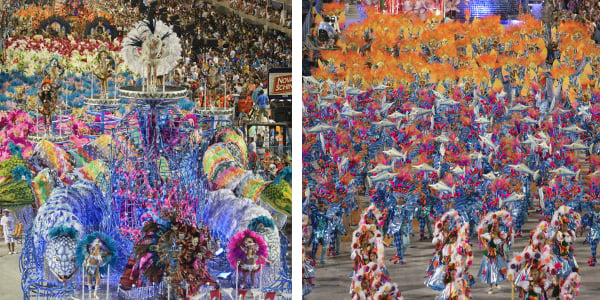
Left: Brazil, Rio de Janeiro, procession headed by colourful festival float / Dorling Kindersley/UIG
Right: Brazil, Rio de Janeiro, samba dancers in dazzling display of extravagant costumes at carnival / Dorling Kindersley/UIG
Samba
Samba is a traditional Brazilian form of dance and music, with roots tracing back to West Africa. The Favelas of Rio are the Samba hub of Brazil, and Carnival is the stage for some of the 200 plus Samba schools in Rio to showcase their moves (and costumes!)
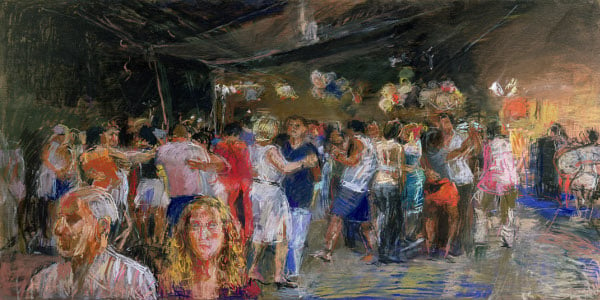
Dancers at St. Christopher’s Bar, Rio (pastel on paper), Eyton, Anthony (b.1923) / Private Collection
2016 Olympics
Beating Madrid, Tokyo and Chicago to the punch, Rio de Janeiro successfully won the bid to host the 2016 Summer Olympic Games.
With multiple venues in Rio still under construction and the city’s infrastructure coming into scrutiny, the run up to the Olympics has been a controversial one. One thing everyone can agree on is the opening ceremony will be something to behold!
Find Out More
See all images of Rio de Janeiro in the Bridgeman archive.
All images in this article are sourced from bridgemanimages.com. Contact the Bridgeman sales team at nysales@bridgemanimages.com for more information regarding licensing, reproduction and copyright.
